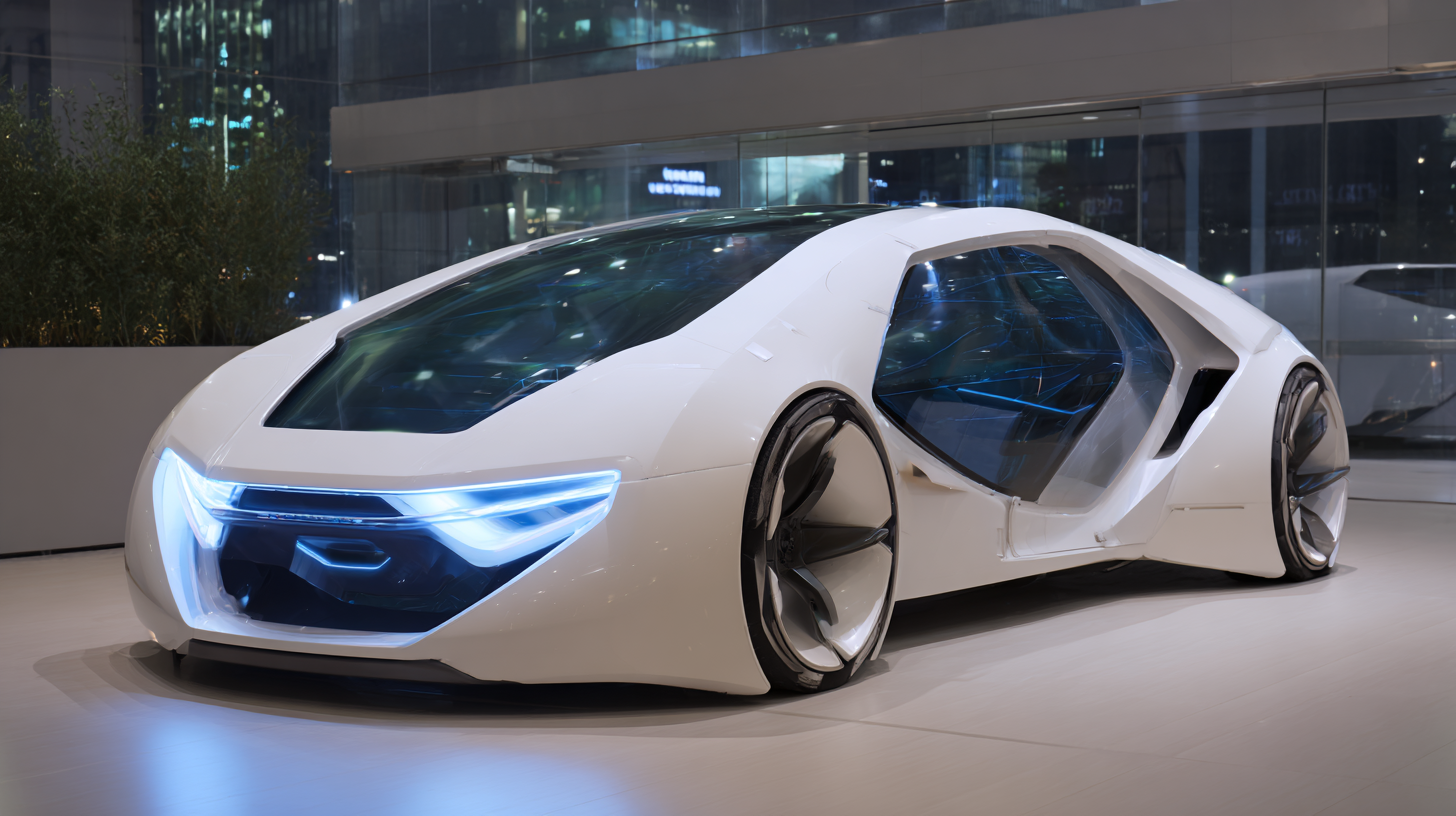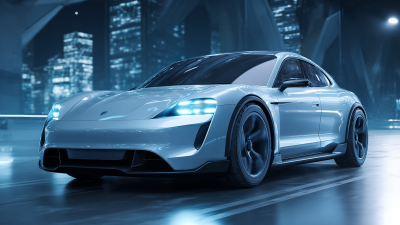Leave Your Message
The automotive industry is undergoing a significant transformation fueled by innovative technologies that reshape the future of Car Truck Vehicles. Recent reports, such as the one by McKinsey & Company, project that connected and autonomous vehicles could account for up to 15% of global vehicle sales by 2030, creating a market worth over $600 billion. Additionally, the rise of electric vehicles (EVs) is poised to make a substantial impact, with BloombergNEF forecasting that by 2040, EVs will represent 58% of passenger car sales and 80% of commercial truck sales.

As manufacturers integrate advanced technologies like artificial intelligence, blockchain, and the Internet of Things into their operations, the design and functionality of Car Truck Vehicles are evolving to meet the demands of a sustainable and efficient future. Thus, understanding these innovations is crucial for stakeholders aiming to navigate the complexities of the automotive landscape.
The automotive industry is undergoing a profound transformation driven by the rise of electrification, which is reshaping the design and functionality of both cars and trucks. With increasing concerns about climate change and air quality, manufacturers are prioritizing electric vehicle (EV) technologies, leading to a surge in innovation. Electric drivetrains are not only minimizing reliance on fossil fuels but also boosting efficiency and reducing greenhouse gas emissions. The growing variety of EV models—including trucks designed for heavy-duty tasks—demonstrates the versatility and potential of this movement across different vehicle types.
Moreover, advancements in battery technology are playing a crucial role in this electrification wave. Enhanced energy density, faster charging capabilities, and longer lifespans are making electric vehicles more accessible and practical for consumers and industries alike. As infrastructure for EV charging continues to expand, the transition to electric vehicles is becoming increasingly feasible. This shift not only benefits manufacturers by opening new markets but also gamers consumers with lower running costs and a cleaner driving experience. As we look toward a sustainable future, the integration of electrification in automotive design represents a pivotal step in redefining mobility for generations to come.

Autonomous driving technologies are fundamentally transforming our perception of mobility and safety on the roads. As highlighted in the latest discussions at the Mobility Tech Forum 2025, the convergence of current market trends and innovative technologies is accelerating the development of autonomous systems. Companies are increasingly focusing on autonomous electric vehicles, which not only promise to enhance urban transportation but also contribute to sustainability goals. For instance, partnerships between major automotive and technology firms aim to introduce autonomous taxis, revolutionizing how we navigate through cities.

Tips: When considering the future of transportation, think about how these technologies can improve efficiency, reduce accidents, and minimize environmental impact. Staying informed about advancements in AI and connected vehicle software can help individuals adapt to these changes.
Moreover, the advent of Physical AI is profound. This technology enables autonomous vehicles to interact with their surroundings more effectively, enhancing real-time decision-making capabilities. As companies continue to innovate, we are witnessing a significant leap towards a network of smarter, safer transportation solutions.
Tips: Keep an eye on how emerging technologies are shaping vehicle intelligence and urban mobility. Understanding these trends will prepare you for the changes and opportunities in the automotive landscape.
The automotive industry is undergoing a significant transformation, with connected vehicle technology at the forefront of this evolution. According to a recent report from McKinsey & Company, the connected car market is projected to reach $155 billion by 2030, highlighting the growing demand for smart technology that enhances the driver experience. Connected vehicles utilize advanced sensors, cloud computing, and artificial intelligence to provide drivers with real-time information, from traffic conditions to vehicle diagnostics, fostering a safer and more efficient driving experience.
Moreover, these innovations extend to the concept of vehicle-to-everything (V2X) communication, which enables cars to interact with their surroundings, including other vehicles, infrastructure, and even pedestrians. A report by Gartner predicts that by 2025, over 25% of vehicles on the road will be connected, significantly improving traffic management and reducing accident rates. Features such as automated driving assistance, predictive maintenance, and in-car infotainment systems are becoming standard, creating a seamless integration between the vehicle and the driver’s digital lifestyle. As the automotive landscape continues to evolve, the emphasis on connectivity is undoubtedly shaping the future of car and truck vehicles.
The automotive industry is currently undergoing a significant transformation driven by innovative materials and design principles that emphasize performance and sustainability. Among these advancements, the expected growth of the shape memory alloy market, projected to increase from $14.8 billion in 2024 to $30.89 billion by 2031, underscores the increasing adoption of advanced materials in vehicle manufacturing. These materials not only enhance the functionality and durability of automotive components but also contribute to lighter vehicle structures, improving overall efficiency.
Moreover, manufacturers are increasingly recognizing that design goes beyond aesthetic appeal to encompass technological innovation. The unveiling of cutting-edge concept vehicles at major automotive expos, like the recent event in Munich, highlights a shift towards more unified design languages that integrate digital capabilities and contemporary aesthetics. As electric vehicles become more prevalent, companies are innovating in the development of compact systems and energy-efficient components, setting new standards for performance that align with sustainability goals. The fusion of innovative designs and materials will shape the next generation of vehicles, ensuring they meet the demands of modern consumers while pushing the boundaries of automotive engineering.
The integration of digital twin technology within the automotive industry is revolutionizing production processes and enhancing quality control through advanced AI applications. By employing high-resolution modeling and simulation capabilities, manufacturers can achieve precision in their fabrication techniques. This not only streamlines production workflows but also allows for innovative design strategies that significantly improve product development cycles. As a result, automotive companies can rapidly iterate on designs, leading to higher quality vehicles tailored to consumer needs.
Moreover, the role of AI in this transition cannot be overstated. It acts as a crucial catalyst for the industry's shift towards more automated and intelligent manufacturing practices. With the AI-powered manufacturing market projected to grow from $7.89 billion in 2025 to $100.69 billion by 2032, the push for AI is being recognized as essential for achieving new industrialization goals. This growth signifies a compound annual growth rate of 45.11% during the forthcoming years, highlighting that the integration of AI is not merely optional but a vital element in driving forward the automotive sector's innovation and efficiency.
| Aspect | Description | Impact |
|---|---|---|
| AI in Production | Utilization of AI algorithms to optimize the manufacturing process. | Increased efficiency and reduced production costs. |
| Quality Control Automation | AI systems monitor quality and detect defects in real-time. | Higher quality products with fewer defects. |
| Predictive Maintenance | AI predicts machinery failures before they occur. | Reduced downtime and maintenance costs. |
| Supply Chain Management | AI optimizes inventory levels and logistics. | Improved delivery times and reduced inventory costs. |
| Customer Experience Enhancement | AI-driven systems provide personalized interactions. | Better customer satisfaction and loyalty. |






